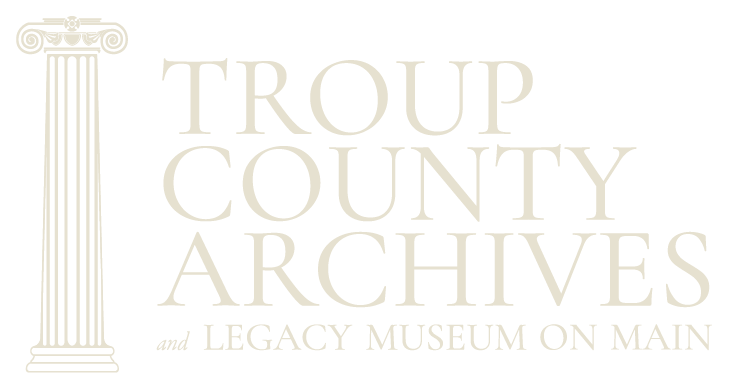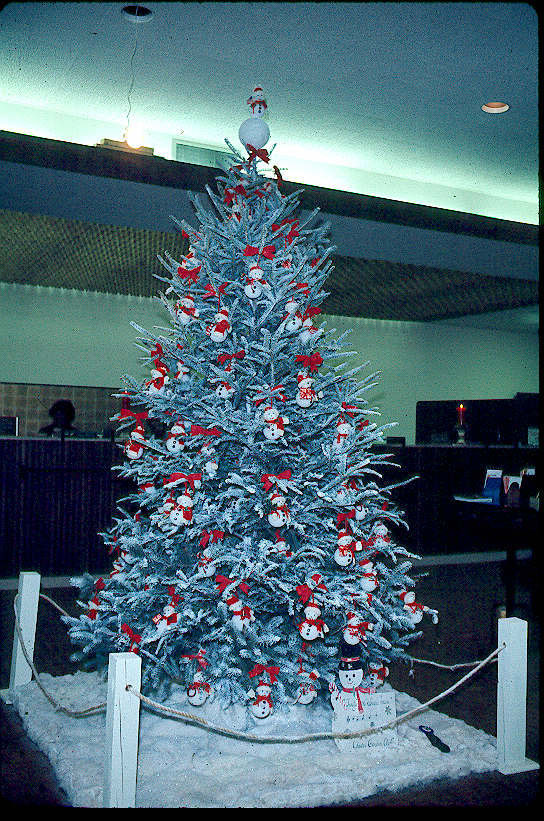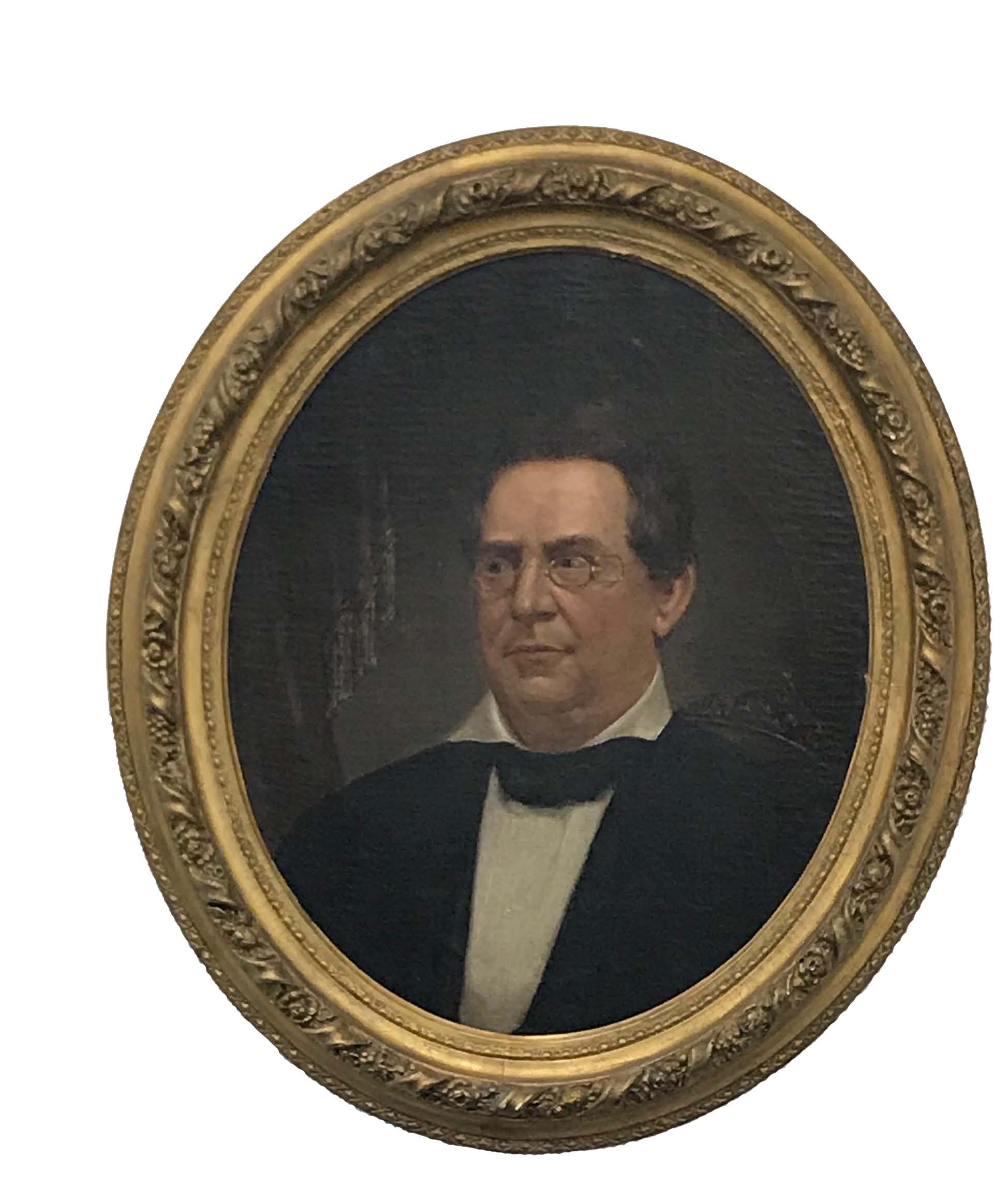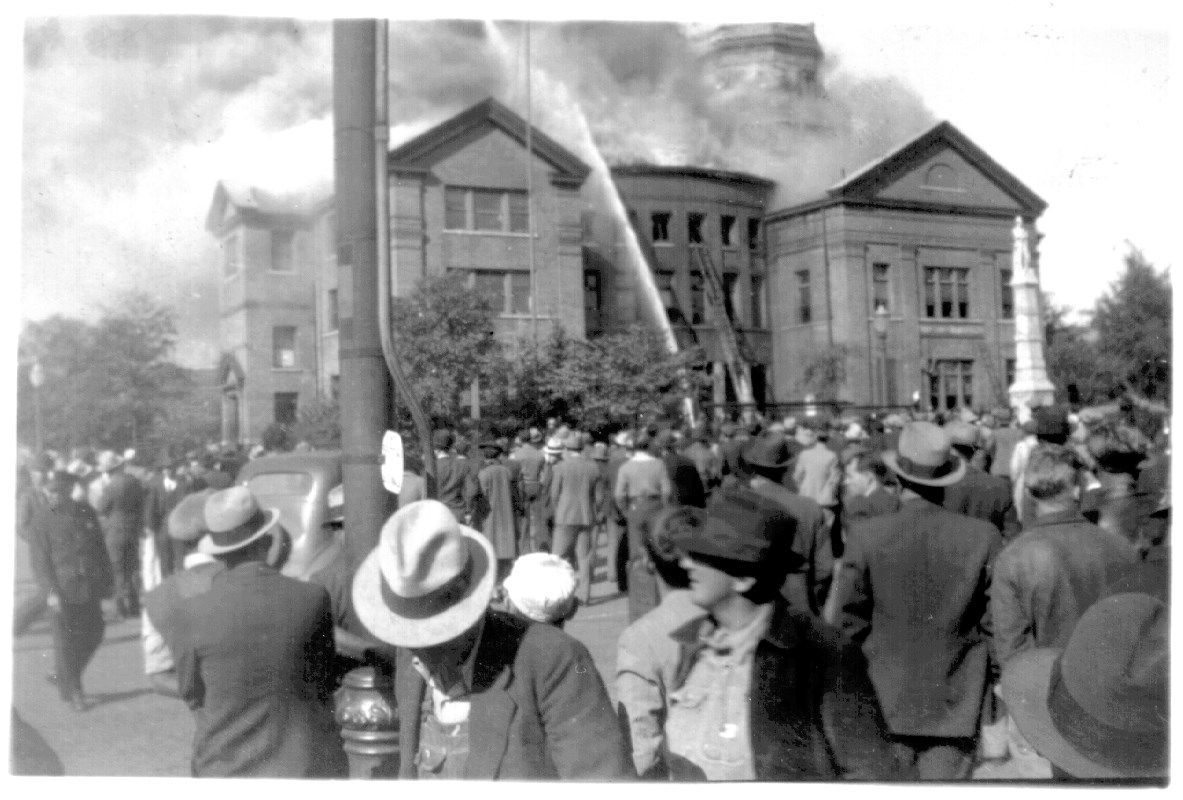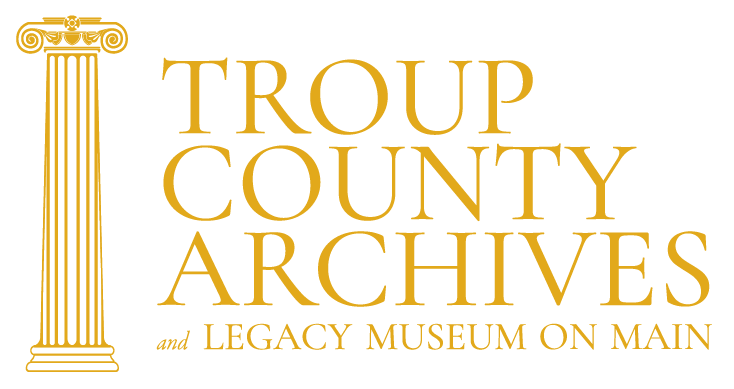
This panoramic image was taken by Snelson Davis at a picnic of the Dixie Cotton mills employees with their families on July 5, 1927. TCA Collections
Recognizing that photographs are an integral part of our historical record, Troup County Archives first director, Faye Phillips, addressed the subject in an article published in the La-Grange Daily News on August 6, 1983. In the four decades since Ms. Phillips’s article appeared, the Archives has amassed an impressive collection of historic photos. In this issue of Clio Notes, we take a look at some of the individuals who have documented Troup County’s history through photography. Some are noteworthy for longevity and the volume of their work; others happened to be at the right place at the right time to snap an iconic photo. Many more pursued their craft in relative anonymity. Their combined efforts have left us an important visual record dating back to the late 1840s.
Photography in Our History
By Faye Phillips
LaGrange Daily News, August 6, 1983
Americans have been mystified and intrigued by photography since its discovery in 1839 by Frenchman L.J.M. DaGuerre. In the 1850s people sat in uncomfortable braces and headrests for five minutes or more to have their images captured by the daguerreotypist. Photographs were used as calling cards in the 1860s and 1870s and were appropriately titled cartes-de-visite.
In recent years old photographs have become collectors’ items and historical documents. The Georgia Department of Archives and History’s Vanishing Georgia project copied hundreds of photographs in Troup County in order to preserve them for future generations. Of course, today, the snapshot is an important part of our everyday lives. [In 1983, only the nerdiest among us might have dreamed of digital camera phones, and even they could not foresee the selfie craze.]
As early as 1853 LaGrange could boast of having a local photographer. Advertising in the LaGrange Reporter of April 8, 1870, Mr. Pleasant Prophitt stated that he had “established himself in the city in 1853; and has devoted his whole time and attention to the business, laboring and studying” of his craft. Prophitt’s gallery was located opposite the Baptist Church on Broad Street. At one time he had a business partner named Rasburry. Other early La-Grange photographers were Childress and Lee. J.M. Tomlinson, and Jul-ius Lindsay Schaub. All operated businesses in LaGrange during the 1870s, 1880s, and 1890s.
Julius L. Schaub came to LaGrange from Atlanta around 1880. Once a prominent photographer in Atlanta, he became equally well known in LaGrange and Troup County. His most famous photograph is that of the visit of President Jefferson Davis to LaGrange on his way to the unveiling of the statue of Senator Benjamin Harvey Hill in Atlanta. Davis passed through LaGrange April 30, 1886.
Schaub died December 31, 1911, and is buried in Hillview Cemetery. He had served in the Confederate Army in Company B of the 15th (sic) North Carolina Volunteers and was Commander of the Troup County Confederate Veterans when he died. F.M. Longley wrote a tribute to his friend Schaub in the LaGrange Reporter. “He was a mighty oak in his convictions and never questioned the perfect justice of that cause for which he willingly gave four years of hard service and was loyal to it even unto death.” Schaub, like so many other Confederate veterans, was buried in his faded uniform.
In reviewing the LaGrange city directory for 1912, it appears that Schaub’s studio was taken over by his daughter, Miss Martha L. Schaub. However, after 1912, we find no further information about Miss Schaub.
Other photographers in LaGrange in the early part of the twentieth century were Milton D. Fowler, Robert L. Smith, and William C. Holmes. Holmes’s studio in 1928 was located in the Morgan Building on North Court Square.
In 1929, Snelson Davis succeeded Holmes in the location. Davis is the best known 20th century LaGrange photographer. Almost everyone who lived in LaGrange from 1929 to 1956 had their photograph taken by Davis. Davis was described as “the colorful local photographer.” Davis’s partner was Samuel C. Taskett, another important LaGrange photographer. Snelson Davis did have some competition from other photographers during his long career in LaGrange. From 1938 through 1945, Alonzo Carter and Leon E. Jenkins also had photographic studios in town. By 1946 Mr. Jenkins had a partner, Quinton N. Johnson, and two women photographers had entered the market. Unfortunately, Mrs. Daisy Melton and Mrs. Ellen C. Pope, who appears to have purchased Alonzo Carter’s studio, were no longer in business after 1948. Mrs. Melton went to work for the Singer Sewing Machine Company and Mrs. Pope became a textile worker. Mrs. Pope’s equipment and business may have passed to Betty F. Wallace who managed Jones’s Photography Studio in the basement of Mrs. Pope’s home at 100 Hines Street. Very little else is known about these photographers.
By 1950 Snelson Davis listed himself in the city directory as an aerial photographer and his studio was managed by Mr. Taskett. Other photographers in 1950 in LaGrange were James W. Bolton, 601 Hamilton Street; Donald Chastain, 1016 Hill Street; Karl O. Fuller, 1 ½ East Court Square; and Mable A. Maddox, 412 Revis Street.
Troup County Archives is fortunate to have photographs taken by Prophitt, Rasburry, Tomlinson, Schaub, Davis, and Taskett. We would like to acquire photographs by the others mentioned above and would appreciate any information about them or other LaGrange and Troup County photographers. Photography has had an active history in Troup County and continues to be a favorite interest to our citizens. [Ms. Phillips’s observations are as valid today as they were in 1983. If you can contribute photos or biographical information about the photographers, please contact us.]
Pleasant Prophitt seems to be the first “daguerrean” to make LaGrange his permanent home. We know little about his early life and career. One source states that he was born in 1828 in Newton County, Georgia, the son of James Prophitt and Louisa Runnels. The 1850 census taker listed Pleasant Prophitt as a twenty-one-year-old farmer, residing in the household of his brother, William, in Jasper County, Georgia. Statements published in the LaGrange Reporter indicate that he settled here by 1853. In 1860, Pleasant Prophitt resided at C. M. Heard’s hotel in La-Grange, and he listed his occupation as artist. The Civil War interrupted Prophitt’s photography business. He enlisted in Ferrell’s Battery on May 6, 1862, but he was apparently discharged in 1863 owing to disability.
Prophitt’s advertisements in the LaGrange Reporter allow us to infer a little more about the man and his career as a photographer. On September 22, 1865, he placed a notice in the Reporter stating that he was reopening his gallery above the mercantile establishment of A.E. Cox and Company, and that he would accept payment in cash or barter. Later that same year, Prophitt formed a partnership with Atlanta photographer Mansel W. Rasbury. Their gallery was on Broad Street, just off the Square, opposite the Baptist Church. Only a year later, Prophitt and J.M. Tomlin-son formed a partnership. Rasbury had apparently moved back to Atlanta, but photos from his brief tenure in LaGrange are part of TCA’s holdings. Rasbury was working as an Atlanta police officer when he was shot and killed in March 1872. Prophitt and Tomlinson were in business until about 1869, when Tomlinson opened his own gallery.
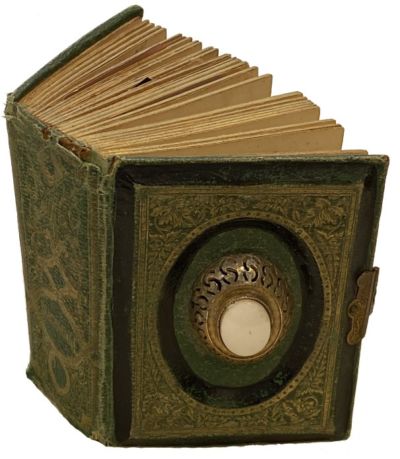
Fuller Family Album within the TCA Collections
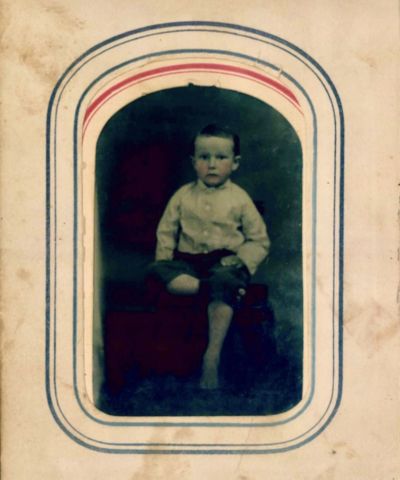
One of the twenty-three care-de-visits in the Fuller Family Album. This child is unidentified but the image was developed on a tin slide. TCA Collections
Pleasant Prophitt suffered from an unidentified degenerative disease. The La-Grange Reporter of May 5, 1873, reveals that he hired Columbus photographer, J.W. French, to help with his business. By that time, Prophitt was barely able to walk, but he kept abreast of advances in photography and continued to work through most of the decade. Starting around 1880, he sold patent medicine to supplement his income. The marriage of Pleasant Prophitt to Annie Swain on January 12, 1881, attracted considerable interest. Newspapers around the state picked up the wedding announcement from the LaGrange Reporter. “A marriage took place at LaGrange last Wednesday which is described as sensational, romantic, and remarkable. Mr. P. Prophitt, who is fifty years of age and has been so paralyzed for a number of years as to be perfectly helpless, was united to Miss Annie B. Swain, a young, good-looking, and accomplished lady. The cause of this venerable marriage is believed to be that both parties are Spiritualists and had received, as they supposed, a communication from the spirit world desiring this union.” Spiritualism, the belief that spirits of the dead could communicate with, and offer guidance to the living, claimed around eight million followers
worldwide in the late 1800s. In 1888 a friend wrote of Prophitt, “His lot is a sad one, but he bears it so submissively that its burden is greatly lightened. His devoted wife is a helpmeet, indeed.” Pleasant Prophitt died on March 6, 1900.
J.M. Tomlinson’s early life is even more enigmatic than that of Pleasant Prophitt. Some genealogists identify him as James Monroe Tomlinson. His tombstone in Hillview Cemetery reads, “James M. Tomlinson, April 5, 1835 – October 11, 1898. Other evidence suggests that he was Jabez Moss Tomlinson, the son of Thomas and Mary McDonald Tomlinson of Oldham, Lancashire, England. The family appears on a census in England in 1841, but by 1850 they are in Pennsylvania. J.M. Tomlinson named one of his daughters Mary McDonald Tomlinson, and the death certificate of his son, Victor Hugo Tomlin-son, identifies him as Jabez Moss Tomlinson.
Tomlinson was a portrait artist who embraced the new medium of photography, and like other aspiring photographers, he was much traveled early in his career. He worked in Atlanta, Augusta, and Tuskegee, before settling in LaGrange. According to the 1860 census, Tomlinson re-sided in the same hotel in LaGrange as fellow artist, Pleasant Prophitt. When war came, Tomlinson joined the LaGrange Light Guards, Company B, 4th Georgia Regiment, and served until the surrender in 1865. In January 1866, Tomlinson purchased Mansell Rasbury’s half interest in the firm of Rasbury and Prophitt. Around the same time, he worked as a civil engineer, doing drafting and mapping for the railroads.
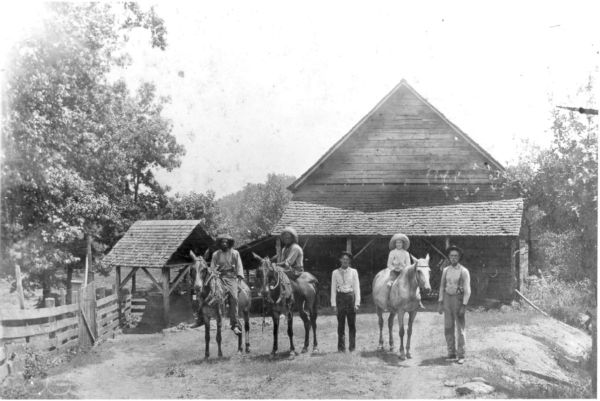
Whatley Farm workers on Whatley Road in the Antioch community paused for this picture to be taken in 1908. The workers are from left to right, Jack Reid, John Turner, Henry O. Whatley, Archie J. Whatley, and the mules are Jones, Jack, and Daisy. TCA Collections and Vanishing Georgia Collections.
Tomlinson’s marriage to Ada Adelaide Bull on June 4, 1869, presented new opportunities for the talented young man. Through his connection with the influential Bull family he joined the faculty of Southern Female College, teaching drawing and painting. In 1872 he opened a new photography studio on Church Street. Though he was a proficient photographer, Tomlinson was better known for his work as a “colorist,” producing oil portraits from photographs. On October 4, 1880, Tomlinson announced that he was giving up photography to concentrate solely on portrait painting. That same month, a photographer with an innovative approach arrived in LaGrange. Julius Lindsay Schaub realized that, in addition to portraits, people would buy his photos of street scenes and landscapes. As early as the summer of 1881, Schaub produced images of Ferrell Gardens and LaGrange’s two female colleges. In 1883 Schaub renovated Tomlinson’s Church Street gallery, adding a skylight to the building. He soon expanded to offer books and stationery. The unique building stood as one of LaGrange’s most significant historic structures until 1993, when community leaders decided to demolish it to create a few additional parking spaces.
When Julius Schaub died on December 31, 1911, he was eulogized as a prominent business and civic leader. He was born in Davidson County, North Carolina, January 9, 1843. He descended from Moravians who emigrated from what is now the Czech Republic. The family spelled their name Shoup, and Julius used that spelling until around 1870. We don’t know why he made the change. He was a student at Yadkin Institute when the Civil War came, and he enlisted in Company B, 14th North Carolina Regiment, rising to the rank of First Sergeant. At the time of his death, he was commander of LaGrange Camp 405, United Confederate Veterans. He also held the title of Grand Rector of the Fraternal Mystic Circle for Georgia and Alabama. A little research revealed that the Mystic Circle was not so much a clandestine secretive society as a practical organization providing insurance for its members.
After the war, Schaub migrated to Macon, Georgia, where he married Geraldine “Denie” Goolsby on November 18, 1868. Denie died on February 25, 1870, less than two months after giving birth to a son. The young widower left his son in care of Denie’s family and moved to nearby Eatonton, to pursue his career as a photographer. Schaub followed his Goolsby in-laws when they moved to Griffin, Georgia. There, on September 22, 1874, he married Ida Leila Wooten. By 1876, Schaub was in Atlanta, in partnership with Jabez W. Perkins, with a gallery on Whitehall Street. On June 3, 1880, the census taker enumerated Schaub, his wife, Ida, son Julius, and daughters Mattie and Annie, living on Loyd Street in Atlanta, but by October they had made the move to LaGrange. Five more children were born after the Schaubs moved to LaGrange.
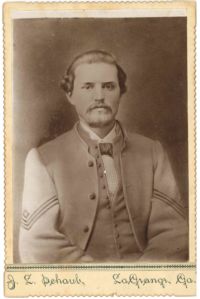
Schaub reprinted a picture that was taken of him while he was serving in Petersburg, Virginia in January 1865 at age twenty-two. TCA Collections
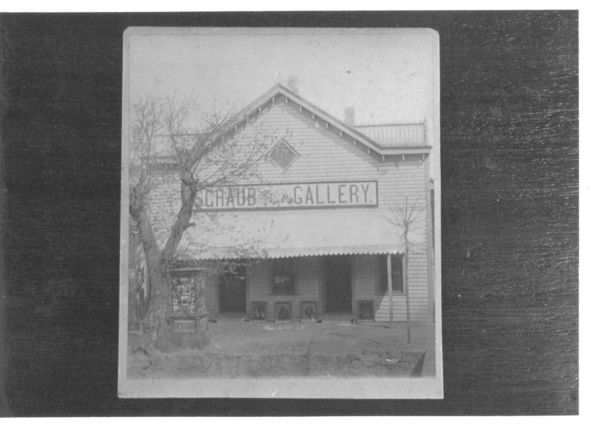
Schaub’s gallery on Church Street. TCA Collections
Schaub’s eldest daughter, Martha, managed the Church Street gallery after her father’s death, but on February 21, 1913, she married James H. Corbett and moved to Chattanooga. The Schaub family sold the gallery to Milton D. Fowler who had been working in and around LaGrange since the 1890s.
Milton Fowler was born September 13, 1861. He grew up in the southeastern section of Coweta County. His grandfather, Thomas, migrated from South Carolina to Cherokee County, Georgia, in the late 1840s, and his father, Coleman Smith Fowler, moved his family to Haralson, Georgia, on the Coweta – Meri-wether County line, around the time of the Civil War. Milton D. Fowler married Margaret Ella Drewery at Newnan on October 12, 1892. We don’t know when Fowler took up photography, but that was his profession when the 1900 census taker enumerated Milton, wife, Maggie, and children Earnest and Nonnie, living on Smith Street in LaGrange. Newspaper ads reveal that until his death on July 28, 1917, Fowler traveled around west Georgia, working in Woodbury, Lone Oak, Luthersville, Newnan, West Point, and Hogansville. At one point, he owned two studios in LaGrange.
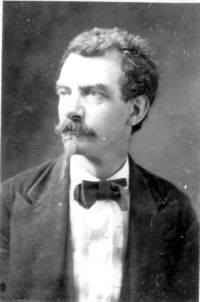
J. M. Tomlinson’s self-portrait. TCA Collections
When M.D. Fowler acquired the Schaub gallery, he hired a young photographer named Snelson Davis to manage it. Davis’s talent and exuberant personality propelled him to a long career as LaGrange’s leading photographer. He performed in minstrel shows and a Vaudeville act. He made spectacular panoramic photos of LaGrange’s textile workers and cotton mills. Long before digital technology, Davis produced images measuring forty by sixty inches. When the aviation craze swept the nation in the 1920s, Davis embraced aerial photography, and when he first used a flashbulb in 1930, he made sure to receive newspaper coverage. His drive to succeed in his chosen profession can almost certainly be attributed to humble beginnings. Abner Snelson Davis, son of James William and Nancy Collins Davis, was born April 23, 1890, in Meriwether County. By 1900 James Davis had moved his family to Troup Factory where he worked as a shoe-maker. Ten-year-old Snelson worked as a doffer in the textile mill and his older sisters tended the spinning frames. Ten years later, in 1910, the family lived on Ware Street in LaGrange. His parents and siblings were employed in the mills, but Snelson listed his occupation as photographer. In 1914 Davis purchased M.D. Fowler’s studio. Over the ensuing forty years, Davis worked with various partners and at different locations around LaGrange, always with his wife, Elsie, as gallery manager.
Sam Taskett was one of Snelson Davis’s many partners. Samuel Charles Taskett was born in Beaverdale, Pennsylvania, March 7, 1913. His parents, Vincenzo and Josephine Taschetta, emigrated from Italy in 1908. The family eventually settled in Rochester, New York, the home of Eastman Kodak. We don’t know if that influenced Sam to take up photography, but we do know that he operated a studio there until the end of World War II. After a brief stint in Florida, he moved to LaGrange in 1947, and entered into partnership with Snel-son Davis. The Taskett – Davis Studio dominated LaGrange’s photography market for a decade, and after Snelson Davis died on May 11, 1958, Sam Taskett continued the business for three more decades. Shortly before his death in 1993, Mr. Taskett donated his large collection of photographic negatives to Troup County Archives.
As we researched these articles and delved into the lives and careers of the photographers, it became apparent that certain threads were common to most of the individuals. The men and women who pioneered photography in our area were free spirits, if not eccentrics. Most were vagabonds early in life, and even when they settled down they changed focus frequently. Pleasant Prophitt was a spiritualist, believing that it was possible to make contact with the other world. J.M. Tomlinson named one of his sons Victor Hugo Tomlinson after the famous French novelist. Victor Hugo Tomlinson’s death certificate states that his father was Jabez Moss Tomlinson. Was that a family joke, or had James Monroe Tomlinson changed his name? Until the mid-twentieth century, most photographers had supplementary jobs, indicating that it was hard to support a family from photography alone.
Photographers of importance have likely been missed. Some of the best images in TCA collections were taken by photographers unknown and hundreds, if not thousands, more images exist of the people of Troup County that remain un-named. Perhaps, this column will inspire you to jot names on the back of your photographs. – Randall Allen
